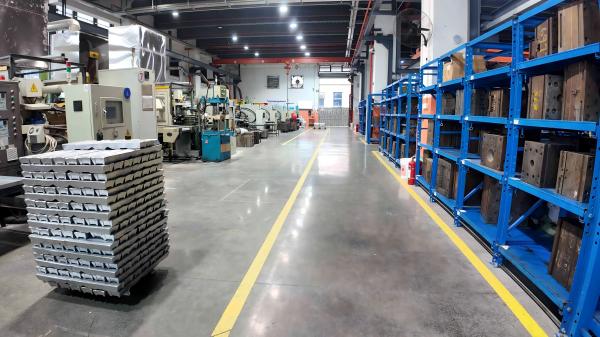News
Site Editor
 Site
/uploads/image/63d63abcab785.png
Struggling with inconsistent zinc die casting parts? Learn key steps to avoid delays, control costs, and achieve top-quality results in your projects.
Site
/uploads/image/63d63abcab785.png
Struggling with inconsistent zinc die casting parts? Learn key steps to avoid delays, control costs, and achieve top-quality results in your projects.
Understanding The Zinc Die Casting Process
Views: 1757
Author: Site Editor
Publish Time: 2024-11-29
Origin: Site
Are inconsistent zinc die casting parts causing headaches for your project? A limited grasp of the zinc die casting process lead to delays and inflated costs. Explore the essential steps to ensure top-quality production.
Why Is Zinc Suitable for Die Casting?
Zinc stands out as an ideal material for die casting due to its unique properties:
Low Melting Point: This attribute makes it energy-efficient to melt and cast.
High Fluidity: Easily fills intricate molds with remarkable detail.
Strength and Durability: Components produced are robust and long-lasting.
Recyclability: Environmentally friendly, as zinc be recycled without degradation.
These characteristics make it perfect for creating intricate and durable die casting parts across various industries.
The Main Steps in the Zinc Die Casting Process
Preparation
Mold Cleaning: The mold is meticulously cleaned to remove any residues.
Lubrication: A lubricant or release agent is applied to facilitate proper filling and easy ejection of the part.
Injection
Molten Zinc Injection: It is melted and injected into the mold cavity under high pressure.
High Pressure: This ensures the molten zinc fills every detail with the mold with precision.
Cooling
Solidification: The injected zinc cools and solidifies within the mold.
Dimensional Accuracy: Proper cooling secures the precise shape and dimensions of the part.
Ejection
Careful Removal: The solidified part is meticulously ejected from the mold to prevent damage.
Ejection Systems: Advanced mechanisms ensure no deformation occurs during removal.
Finishing
Deburring: Any excess material or burrs are removed from the part.
Surface Treatments: Options such as plating or painting enhance appearance or functionality.
Each step is critical in producing high-quality zinc die casting parts, ensuring they adhere to required specifications and standards.
Types of Molds Used in Zinc Die Casting
Hot Chamber Die Casting
Usage: Preferred for low-melting-point metals like zinc.
Advantages: Faster cycle times, as the injection system is submerged in molten metal.
Applications: Ideal for small to medium-sized parts with high production volumes.
Cold Chamber Die Casting
Usage: Employed for metals with higher melting marks or larger parts.
Process: Molten metal is ladled into a separate chamber before injection.
Applications: Suitable for parts that require slower cooling and for materials that could erode hot chamber components.
Selecting the right mold type hinges on your project’s requirements, including complexity, size, and production volume.
How Go Cooling and Ejection Work in Zinc Die Casting?
Cooling
Importance: Ensures the part achieves dimensional accuracy and structural integrity.
Calculation: Cooling time is meticulously calculated based on the component’s thickness and material properties.
Techniques: May include cooling channels within the mold to regulate the cooling rate.
Ejection
Objective: To remove the part without causing damage or deformation.
Systems: Ejector pins or plates are strategically placed to distribute even force during removal.
Considerations: The design of the ejection system is vital to maintaining part quality.
Conclusion
A comprehensive understanding of the zinc die casting process equips manufacturers to achieve exceptional quality and efficiency. From material selection to precise cooling, every step is vital for reliable production. Mastery of this process results in die casting parts with unmatched precision and repeatability, solidifying zinc die casting as a preferred choice in manufacturing.

